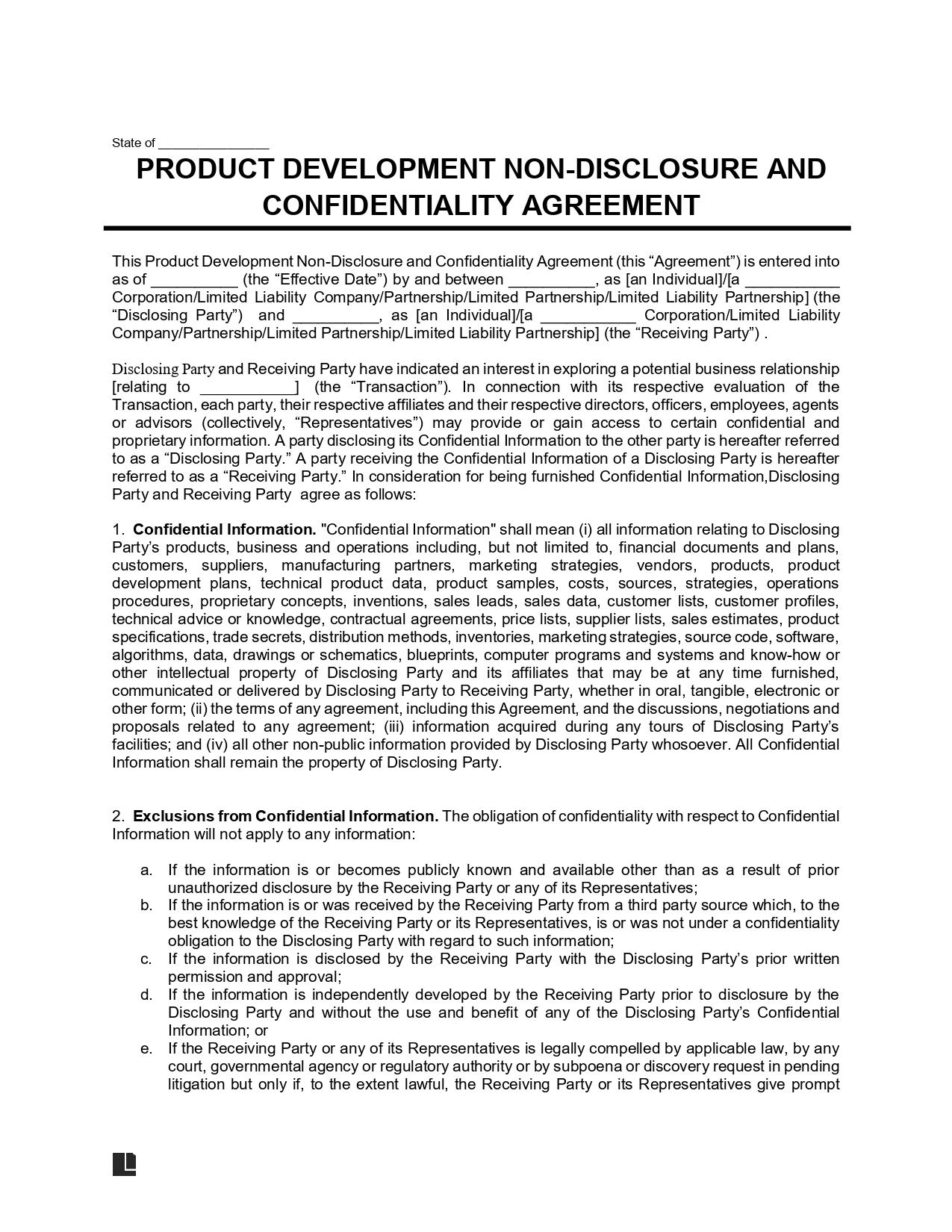A product development non-disclosure agreement is a legal document that protects an individual or company’s product development process. It records all relevant product information and holds the receiving party liable for damages if they share the details in an unauthorized manner.
This document is common when multiple parties, including consultants, manufacturers, engineers, designers, and other companies, work together to create a new product or improve an existing one.
When to Use a Product Development NDA
Here are some examples of when to use a product development NDA:
- Early Development Discussions: Keep ideas confidential from the onset of product development discussions. Implement one when discussing prototypes and product concepts.
- Hiring External Contractors or Consultants: Execute an NDA when bringing in third-party contractors or consultants for product development or design.
- Collaborations with Manufacturers and Suppliers: Ensure that manufacturers and suppliers who have access to product details don’t share the information beyond your partnership.
- Entering New Markets: If you adapt an existing product for a new market, you can implement an NDA to safeguard region-specific strategies.
- Testing Phases: An NDA with a product tester can help you collect secure feedback without risking leaks about your product.
- Seeking Funding: When you seek funding from investors, you’ll likely need to share unique product concepts or market approaches. An NDA can prevent them from divulging your advantages.
- Any Product Development Stage: You may use an NDA if you’re at any stage of product development and need to share information about the product, such as technical specifications, market studies, competitor evaluations, cost analysis, and testing results, with another party.
How to Write a Product Development Non-Disclosure Agreement
Step 1 – Party Details: Enter the name of the disclosing party (typically the product developer) and the receiving party (typically one or more of the product developer’s collaborators). Record the date of the agreement.
Step 2 – Confidential Information: Define the “confidential information,” which can be information relating to the disclosing party’s product samples, technical product data, product strategies, proprietary concepts, operating procedures, inventions, drawings, schematics, algorithms, blueprints, and other desired information. Specify if all shared information will be considered confidential or only specific parts of it.
Step 3 – Exclusions: Clarify any product development information that’s excluded from the NDA.
Step 4 – Obligations: Highlight the receiving party’s obligations to maintain confidentiality. Specify the duration in which the receiving party will hold the confidentiality of the information.
Step 5 – Legal Remedies: Define the legal remedies that the disclosing party will have if the receiving party leaks product information.
Step 6 – Governing State: Enter the governing state.
Step 7 – Signatures: Finalize the agreement by collecting the signatures of the disclosing and receiving parties to activate its binding effect.
Related NDAs
When your product is fully developed, qualifies as an invention, or is awaiting a patent, use a patent/invention NDA.
If your invention pertains specifically to a software product, you can consider using a software development NDA.
Product Development Non-Disclosure Agreement Sample
Download a product development non-disclosure agreement template in PDF or Word format below:


